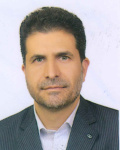| نویسندگان | Mohammad Javad Rahimdel,Hossain Noferesti |
|---|
| نشریه | Resources Policy |
|---|
| شماره صفحات | 1-15 |
|---|
| شماره سریال | 67 |
|---|
| شماره مجلد | 1 |
|---|
| نوع مقاله | Full Paper |
|---|
| تاریخ انتشار | 2020 |
|---|
| رتبه نشریه | ISI |
|---|
| نوع نشریه | الکترونیکی |
|---|
| کشور محل چاپ | ایران |
|---|
| نمایه نشریه | ISI،JCR |
|---|
چکیده مقاله
Mines and mining industries provide many employment opportunities and generate economic growth. Mining is an important way to reach sustainable development and investing in this sector creates suitable economics added value. Huge resources of the various mineral types have held Iran as one of the most-rich mineral countries. Making a proper strategic vision and investment preference for this vital economic sector without considering the internal restrictions (such as energy and water resources) is impossible. Regarding different limitations exist in the determination of appropriate investment opportunity, multi-attribute decision-making (MADM) methods can be applied. Although these methods have been widely used in the literature, studies in the investment prefer-ences of the mineral resources are insufficient. This paper aims to study the investment preference of Iran’s mineral types using hybrid MADM (HMADM) models. The productivity of energy consumption, water, and labor force are considered as the main decision criteria. The hybrid methods fuzzy-DEMATEL-TOPSIS and fuzzy- DEMATEL-PROMETHEE are applied to study the comparative advantages in Iran’s mineral resource exploita-tion. Regarding the results of this study, the productivity of the consumed water and the value-added production have the highest importance in prioritizing the mineral resources of Iran. Moreover, gold, coal, copper, iron ore, kaolin and fireclay, and lead and zinc mineral types are prioritized, respectively.
لینک ثابت مقاله
